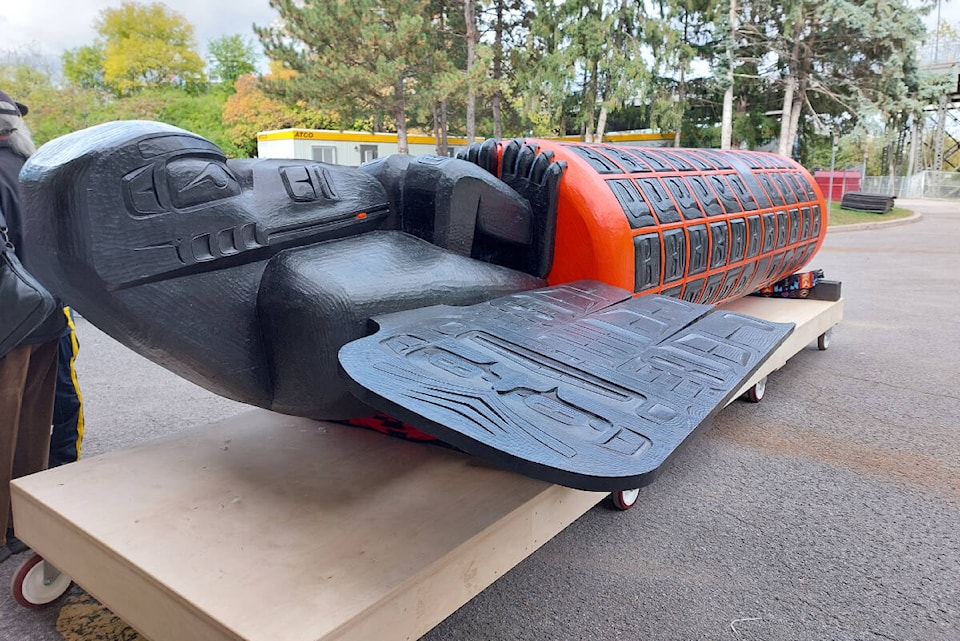Honouring the lives of Indigenous children removed from their families and sent to residential schools, Indian Residential School Memorial Monument by Kwakwaka’wakw artist Stanley C. Hunt will end its journey from the West Coast at the Canadian Museum of History, where it will become part of the national collection.
In May 2021, national news outlets announced that the unmarked graves of Indigenous children had been found at a residential school site near Tk’emlúps / Kamloops, British Columbia. Inspired by this event and the customary erection of memorial monuments, Hunt carved a series of 130 unsmiling faces, each representing an individual child. The faces are outlined in orange as a reminder that every child matters, and the 5.5-metre (18-foot) Monument has been painted black to mark a dark time in history. The raven at the top represents the creator and protector, calling back the spirits of the children represented below.
“This powerful memorial is a tangible reminder of events from our shared past,” said Caroline Dromaguet, President and CEO of the Canadian Museum of History. “Its acquisition and eventual display in 2024 gives us new opportunities to spark national conversations related to reconciliation and the residential school system. We hope that visitors will not only be moved by the monument’s rich symbolism, but also be inspired to engage in thoughtful discussion and reflection around a difficult chapter in this country’s evolving story.”
“The monument tells the truth about a time in our history that was dark. The monument identifies all the participants. The monument is black washed to mark that dark history. Orange to mark every child does matter. I did not write the history of Canada. I am marking a time in our history and to give our children a voice. The raven is cradling the seed of life in his beak. This raven has been created to help call our children’s spirit’s home. This raven will help us find and to identify the children. Through research and through DNA, my hope is to name all the children that are found. How would we ever know what these children could have become, if they were able to live a long and prosperous life?” said Kwakwaka’wakw artist Stanley C. Hunt. “I am honored to have this monument stand in the Canadian Museum of History. One hundred years from now, 500 years from now, the Indian Residential School Memorial Monument will be standing and still telling this story.”
Hunt is Kwagu’l from the village of Tsaxis (Fort Rupert) and comes from a long line of distinguished Kwakwaka’wakw artists. The Museum of History is also home to Hunt’s carved mask, Kwa-giulth Moon.
Completed last June, the monument began its cross-country tour in British Columbia, with logistical and transportation support from the Canadian Coast Guard and the RCMP. It was part of a special ceremony in Vancouver for National Indigenous Peoples Day on June 21, and from Sept. 6 to Oct. 10, the monument was available for viewing at the RCMP Heritage Centre in Regina, where it helped mark Canada’s National Day for Truth and Reconciliation on Sept. 30.
The monument has arrived at the museum and will be available for viewing in 2024. Hunt will travel to the museum in the coming months to discuss monument’s placement and public engagement, as well as to record an oral history interview related to the project.
Located on the shores of the Ottawa River in Gatineau, Quebec, the Canadian Museum of History welcomes more than 1.2 million visitors each year. The Museum’s principal role is to enhance Canadians’ knowledge, understanding and appreciation of the events, experiences, people and objects that have shaped Canada’s history and identity, as well as to enhance Canadians’ awareness of world history and culture. Work of the Canadian Museum of History is made possible in part through financial support of the Government of Canada.
